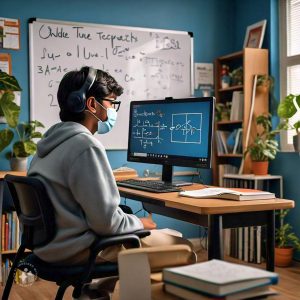Benefits of Virtual Schooling: Why Online Education Beats Physical Schools. Our academy ASVA(Al Saudia Virtual academy) is known for its top class tuitions provided to the students worldwide. The discussion around online schooling versus traditional classroom education is escalating, and the balance is tilting more towards virtual learning. In this day and age where technology impacts every facet of life, online schooling has unparalleled merits. For now, let us analyze its advantages: convenience, knowledge access and flexibility, cost effectiveness in addition to real-world value.
Convenience: Learn from Anywhere, Anytime
-
No more stressful commutes or early morning chaos.
-
You can learn comfortably from home—a calm space leads to better focus.
-
Save time, energy, and transportation costs.
Online schooling allows you to study in your comfort zone, increasing productivity and reducing unnecessary stress. In contrast, physical schools require daily travel, draining both energy and motivation.
Flexibility: Education on Your Schedule
-
Set your own study hours.
-
Rewatch lessons anytime you need a refresher.
-
Balance school with personal commitments like hobbies, part-time work, or family time.
Traditional schools enforce rigid timetables, which often don’t align with every student’s rhythm. Virtual learning respects your pace, giving you more control over your education.
Expanded Knowledge Access: Beyond the Textbook
- Have instant access to AI tools, interactive sites, and worldwide resources.
- Learn from YouTube tutorials, online blogs, and forums.
- Learn real-world applications of topics—not textbook theories alone.
Physical schools tend to restrict students to a set syllabus, whereas online sites open a world of learning, as per your interest and career goals.
Social Connections: Global, Not Just Local
- While traditional schools provide face-to-face contact, they also expose pupils to bullying and peer pressure.
- Home schooling allows for secure, worldwide communication, fostering cultural awareness.
- Commute time saved permits real-life friendships and family connection.
Virtual classrooms are not alone—they are worldwide networks that encourage cooperation without the social anxiety often present in conventional environments.
Cost-Effective and Widely Accessible
These are key benefits of virtual schooling:
-
Save on uniforms, transport, meals, and supplies.
-
Many platforms offer free or affordable courses.
-
All you need is a device and internet connection—no need to relocate for quality education.
Online education breaks economic and geographic barriers, making quality learning available to everyone, everywhere.
Real-World Skills for Modern Careers
- Acquire digital literacy, independent research, and self-management.
- Develop practical skills in in-demand areas such as coding, graphic design, and data analysis.
- Online school is reflective of contemporary remote work culture.
Traditional schools tend to focus on grades and memorization, while virtual education emphasizes being prepared for the real world and equipping students for the changing job market.
Final Verdict: Virtual Schooling is the Future
Online education is not just an alternative—it’s an upgrade. With its convenience, affordability, flexibility, and real-world benefits, virtual schooling is designed for today’s learners. While traditional schools offer nostalgia, virtual learning is built for the future—inclusive, intelligent, and impactful.
Contact Us
03351810651 & 03023078836
